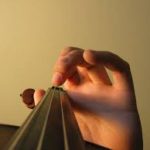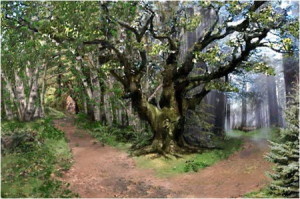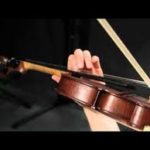1. The effectiveness of lessons is dependent on the relationship between teacher and student, not merely on the information being conveyed. This can be problematic for an online teaching site! At fiddle-online, we do have live events, videos you can relate to, every question is personally answered, and private lessons are available. But even in learning tunes for yourself, you can always learn more about a tune’s background (Tune Group tunes usually say something about each tune), the composer (if any), its typical uses, even a connection to the title, so you can develop your own relationship to the tune.
2. Music theory is only meaningful in terms of the relationships between notes, and how harmonic ideas progress from one to the next. The difference between major and minor key, for example, is all about the relationship of the third note of the scale to the root note.
3. The length of a note — half note, quarter note, eighth note, etc.– is only meaningful in relation to when the following note is played. A short note at the end of a beat is usually a lead-in to the next beat, and makes no sense without it. You wouldn’t practice the US national anthem by singing “Oh say can you see by the” over and over; “by the” is meaningless without “dawn’s early light.”
4. The impact of a beat note depends on its relationship to the pickup notes or breath that introduced it.
5. The musicality of a duo or ensemble is based on the relationship of its players and their musical connection, not in whether they play the notes, rhythms or tempos correctly. A player who as precise as a metronome but rushes the pickup notes, for example, may well throw the other players off tempo, because it’s the relationship of pickup to beat, the implication of when the beat is about to happen, that makes all the difference. A good dance band has a groove for the beat that comes when the musicians tune in to each other.
6. Good intonation is based on the relationships of notes to each other, not to the correctness of their frequencies or the names of the notes. (This is why the Finger Finder is so helpful.)
7. Expression of a musical idea is only effective because of the relationship between the volume or speed or quality of sound at the beginning and at the end of the idea. It’s almost never about a single note well played.
8. A good session is about the relationship of the players, whether they play together, whether they follow each other’s lead, not whether they get all the notes right or play the correct form or tempo.
9. The excitement or calm of a section of music depends upon its relationship to what was played just before. Playing a bunch of fast tunes is not nearly as exciting as building up to fast tunes from slower ones.
10. A change of tempo, from one kind of tune to another, depends on the relationship of the second beat to the first.
11. A smooth bow change depends on the relationship between the upbow and downbow on either side of the change. If they are the same speed and pressure, the change will be totally smooth.
12. Quality sound is based on the relationship between speed and pressure on the bow.
13. Finger placement on a fiddle is based on patterns — relationships of scales and arpeggios, and the proximity between fingers, not correct placement according to an objective measurement. For example, fingers on a string or across strings touch or remain a finger’s width apart, or may feel stretched or close depending on the interval, and these connections mean more to the muscle memory than whether a note was technically correct.
14. The value of a practice session is found in its relationship to the previous one. “You don’t get good, you just get better.”
©2017 Ed Pearlman







